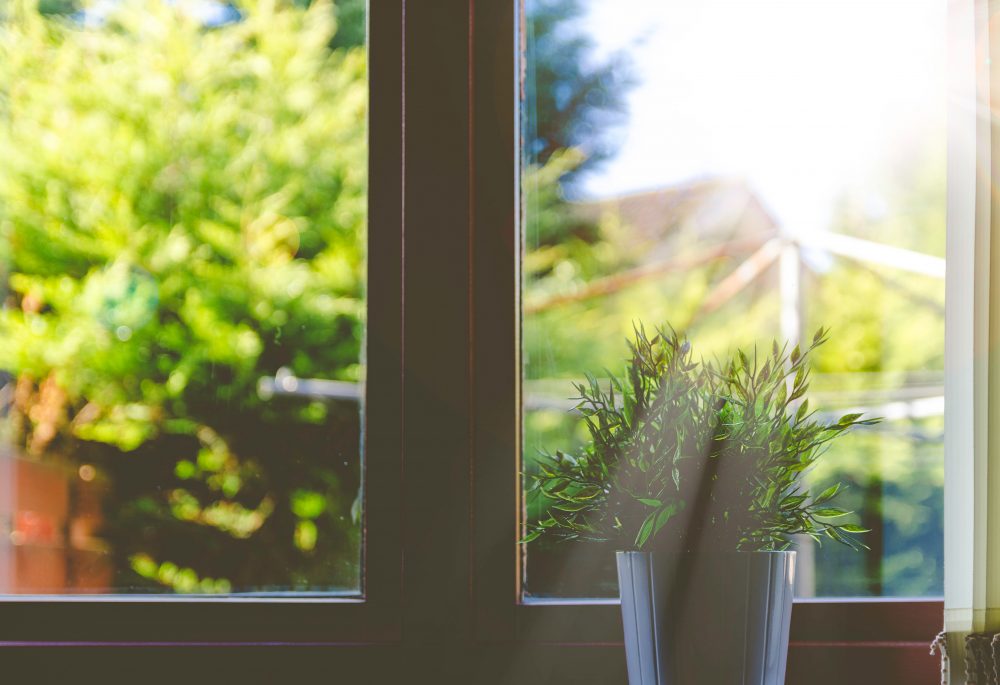
When people think of air pollution, they tend to imagine gray clouds of smog produced by factories and motorized vehicles. Tobacco and car exhaust fumes can elicit coughing and eye irritation. We inherently know that these exterior pollutant exposures can be dangerous to air quality and our health. We often believe that these toxins can easily be avoided by escaping into the refuge of a building. We tend to believe that toxins float away outside while the air remains clean, filtered and fresh inside.
In reality, indoor air quality can become 10x worse than outdoor air because contaminants are more likely to build up in enclosed areas. Since the 1950’s, building construction has focused on energy efficiency which consequently makes the structure more airtight. However, ventilation loads often remain the same and failed to compensate for the decreased air exchanges or increased population.
Indoor air quality can become 10x worse than outdoor air because contaminants are more likely to build up in enclosed areas.
Many factors can contribute to indoor air issues such as moisture, poorly ventilated air, as well as some building materials and cleaning products. These conditions can create potential hazard exposure concerns such as:
- Asbestos (automotive parts, paints, coatings, building materials, ceilings, floor tiles)
- Formaldehyde (paints, modular furniture and adhesives)
- Radon (seeps into building from ground)
- Mold and bacteria (proliferate in moist environments)
- Volatile organic compounds (automotive parts, paints, cleansers, pesticides)
- Combustion products (i.e. carbon monoxide, nitrogen dioxide and sulfur dioxide from boilers, water heaters, cooking stoves as well as vehicular traffic).
- Ozone (photocopy machines, printers, certain types of portable air cleaners)
Indoor air pollutants can lead to a variety of mild, irritating symptoms such as headaches, sore throats, coughing, lethargy, eye irritations, and skin rashes. However, long-term exposure can cause serious health effects like pneumonia and cancer. The longer a person spends in a polluted indoors environment, the more likely they are exposed to high concentrations of pollutants and therefore more susceptible to ailments. The term “sick building syndrome” was coined to describe this phenomenon of building-related illnesses.
Aside from negative health effects, poor indoor air quality can also reduce productivity. Harvard researchers found that green building environments with enhanced ventilation increased cognitive performance. The study measured several factors to gauge overall cognitive function, including crisis response, information usage, and strategy. The employees’ productivity averaged 101% higher in green environments as opposed to conventional building environments. By focusing on improving the quality of the work environment, companies can greatly increase overall output.
Not only does optimal air quality diminish the likelihood of bodily illnesses, it has also been proven to boost worker efficiency. Employees feel clear-headed and awake in the office, leading to a more productive work environment. Thus, maintaining clean air benefits both people and organizations altogether.
References
Brody, Jane E. “DANGERS OF INDOOR AIR POLLUTION.” The New York Times, The New York Times, 28 Jan. 1981, www.nytimes.com/1981/01/28/garden/dangers-of-indoor-air-pollution.html.
Geddes, Darryl. “Upstate, Harvard, Syracuse Study Shows How Better Indoor Environments Enhance Cognitive Function.” Upstate Medical University, Upstate Medical University, 30 Oct. 2015, www.upstate.edu/news/article.php?title=8902.
Kong, Ching-Boon. “Why Indoor Air Pollution May Be Worse than It Is Outdoors.” South China Morning Post, South China Morning Post, 10 June 2016, www.scmp.com/lifestyle/health/article/1820604/why-indoor-air-pollution-may-be-worse-it-outdoors?edition=international.
Main, Douglas. “Your Office Air Is Killing You.” Newsweek, Newsweek, 2 June 2016, www.newsweek.com/2016/06/10/indoor-air-pollution-revolution-465531.html.
Rinkesh. “Causes and Effects of Indoor Air Pollution.” Conserve Energy Future, 4 Jan. 2017, www.conserve-energy-future.com/causes-and-effects-of-indoor-air-pollution.php.



